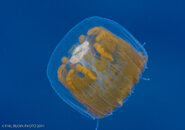bvanant
Contributor
If the 30 is the only macro lens that will come out (one from Sony and one from Sigma) then I will probably sell my system and housing and look at some other micro 4/3 system. I want a 1:1 macro lens in the 60 mm range. Adding a +10 diopter (subsee) to the 30 macro will only get you to 1.1 to 1 and that is not enough. But then again, Sony is not making cameras for UW guys so I shouldn't complain.
Bill
Bill





